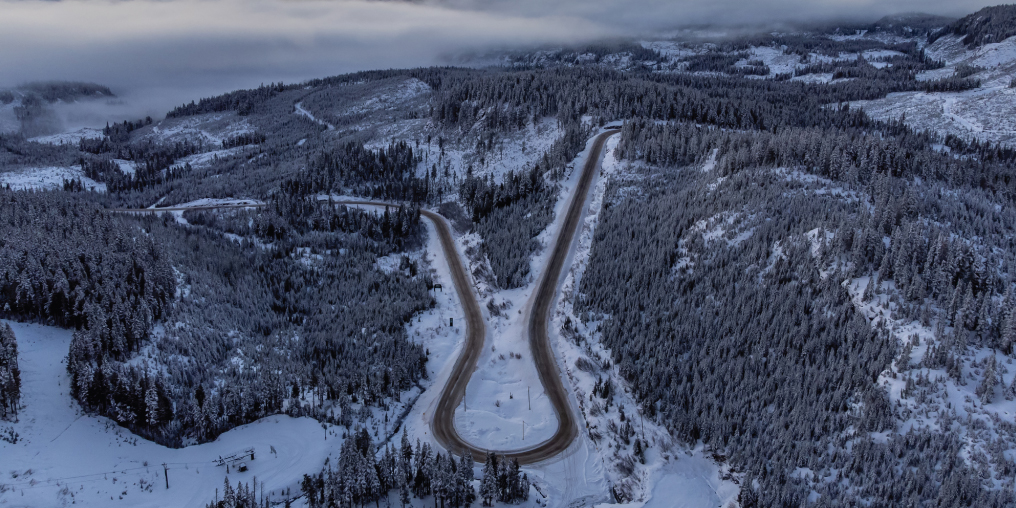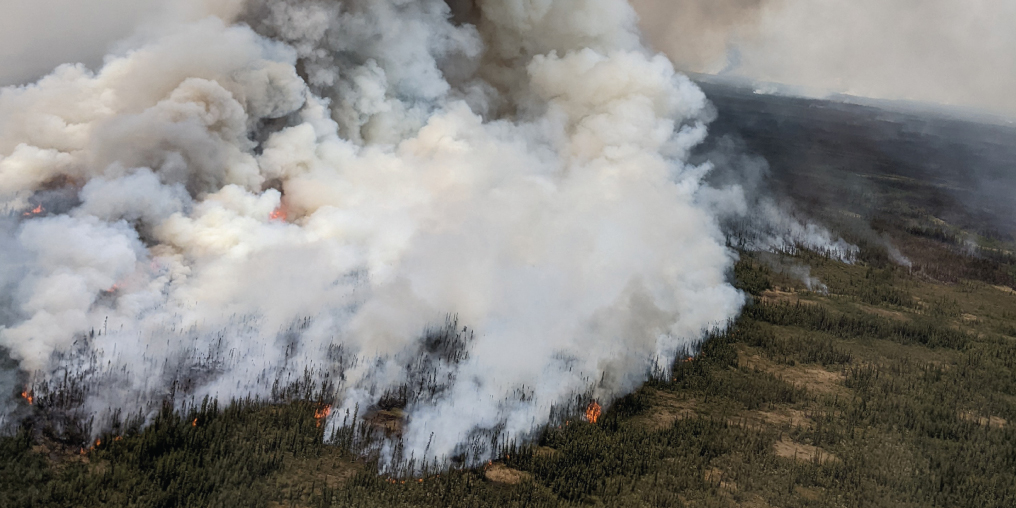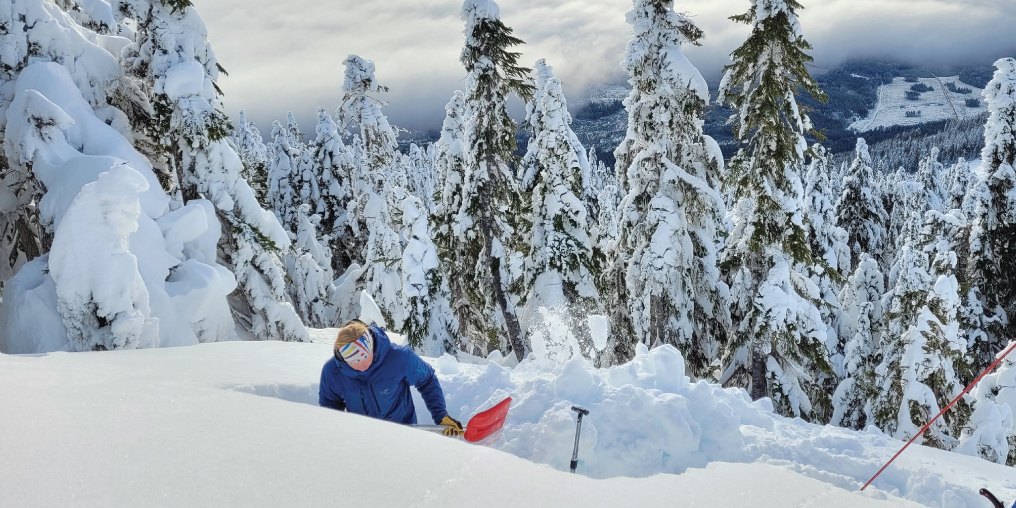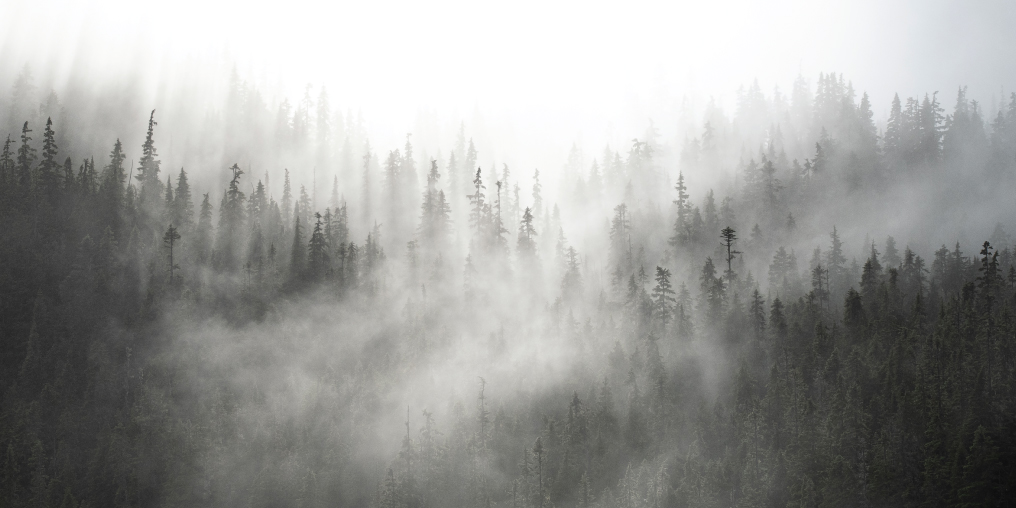As I’m writing this, it’s October 24, and it’s snowing—the earliest snowfall I have experienced in the Valley—and since 10 cm is expected on Mount Washington, I know the plows and sanders will be at work on the Strathcona Parkway, the road up to the resort.
It reminds me of a night I spent on the mountain in the second week of December, 2021. It was dark and snowing big, sticky flakes that had been accumulating all afternoon. By engaging the four-wheel drive, and some rocking back and forth, I extricated my truck from its Raven Lodge parking space. I helped push a couple of cars out of their spots and then eased onto the road.
As I merged with the alpine traffic creeping down from the upper lots, my wipers kept the view clear: a seasonal string of brake lights as far down the line as I could see. All went well for a brief time, until past the Sunrise quad entrance, where a plow truck emerged onto the ascending lane. But the snow had compacted, and I could see the small car ahead of me slipping to the edge now and then. At the next steep decline, I downshifted to create more distance between myself and the little car.
I like to think that I’m essentially a humble person, but there might be an unwise smugness that surfaces when I’m out in winter driving conditions. (After all, I learned to drive in the winters of Ontario’s snowbelt.) I can’t recall a specific incident, but it might be that, more than once, I have made a derisive comment about an Island or Lower Mainland driver when a smear of white descends on local roads. So when the car ahead of me attempted to brake to avoid hitting the car in front of it and began to spiral, my unfair judgement was confirmed, and I thought, “Uh-oh.”
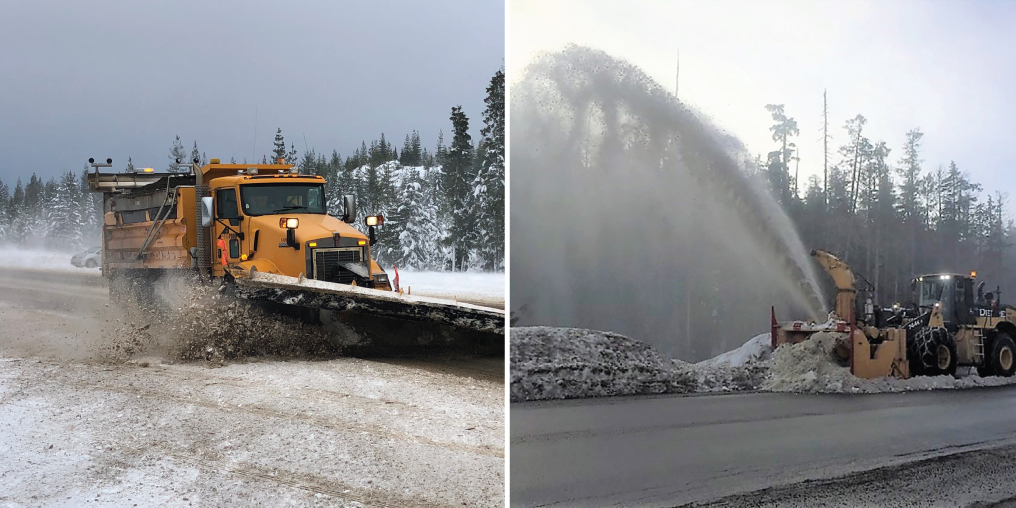
PHOTOS COURTESY OF MAINROAD NORTH ISLAND CONTRACTING
It was a graceful spiralling, really, but harrowing, I bet, for the occupants. And then the inevitable crunch of the collision, which caused damage, but no injuries—I checked. But the two cars were now blocking the lanes in both directions. As it turned out, it was one of many spin-outs, fender-benders, and lane blockages that night. These incidents took hours to clear and delayed the descent of those of us inching our way down to the valley.
The conditions were extreme, but the Strathcona Parkway is a unique route upon which extreme conditions are not uncommon. According to Chris Cowley, general manager of Mainroad North Island Contracting LP (the Cumberland-based company that maintains the parkway), it’s the most difficult piece of road on the Island to tend to, because it experiences so many different conditions.
“From the turn-off at Highway 19,” says Cowley, “to the top of the road at the resort (a distance of 17 kilometres), there’s an elevation change from 350 feet to 4000 feet.” That’s not just an ear-popping climb or descent, it means that drivers can pass through three different weather patterns. And that contributes to potential traffic problems. “The resort draws people from all over the Island,” says Cowley, “[and] the place they are leaving from in the morning—say, Victoria—might have mild weather. They’re not necessarily prepared for the potentiality that the mountain weather will be quite different and changeable through the day while they’re on the slopes.”
Justin Burgers, Mainroad’s operations manager, explains that the province categorizes the parkway as a Winter Class A road—high volume and high priority. His 18-person crew and equipment reflect that high priority, and they reflect the fact that Mount Washington receives an average of 11 metres of snow each winter. It’s a lot of clearing, a lot of sanding. During a heavy snowfall, at least three plow trucks and a grader will continuously push aside snow throughout the day and night, with a foreman delivering fuel so the equipment can keep at it.
As the snowbanks start to close in, narrowing the road shoulder, a 550-horsepower loader-mounted snowblower is employed to carve into the banks and shoot the snow 100 to 150 feet away. Sometimes a snowcat is brought to cut down the shoulder banks that are getting too high.
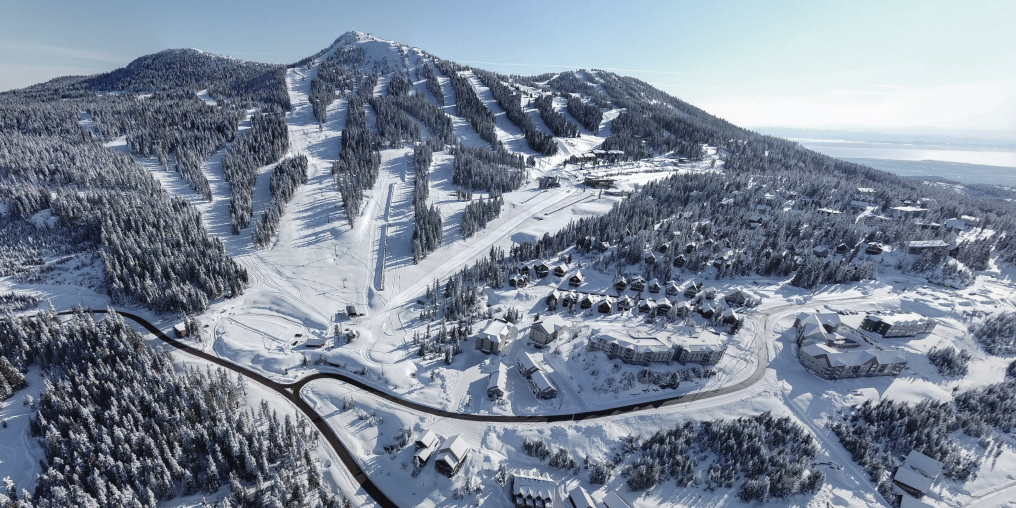
PHOTO BY NICK THORNTON
Sand and salt are essential for managing the road conditions. Brine solution is applied when snow and ice formation is forecast. But sand is the main tool. “Mainroad is responsible for 3,600 km of provincial roadway in the North Island area,” says Burgers, “but we use a full one third of the region’s road sand on the 17-kilometre extent of the parkway—anywhere from four to six thousand tons of sand per winter.” Despite the planning, preparation, materials, machinery, and crew, the weather on the mountain can still surprise. With climate change, Cowley explains, weather forecasting is more difficult. The forecast might be for 10 cm, but if what actually occurs is 40 cm, “[t]hat’s a big problem for us,” he says. “The snow comes down fast and heavy, accumulating right behind the plow truck.” And, with the volume of traffic, that’s when the snow can get compacted and cause challenges like those on that night in December 2021.
“When the road is full of cars,” says Cowley, “it slows down the plowing and the sanding.” Fortunately, steps have been taken to mitigate this complication. In addition to the Mount Washington buses that pick up people in town, the resort has added frequent shuttle service from the base parking lots. And management at the resort will close the road at the bottom or hold people at the top for a time so that the plows can clear the road without traffic.
Cowley urges drivers to come prepared. “I get it,” he says. “When I was young, I’d just jump in the car with a group of buddies. We just wanted to ski. We didn’t think about the road conditions.” But, he concludes, if you check the weather forecast for the mountain, if you check Drive BC, if you have snow tires and heed chain-up requirements, or if you take the shuttle, you could avoid a white-knuckle creep-and-slide down (for yourself and others). And you’ll make space for the crews to do the essential work of clearing the way on this difficult—and important—piece of road.

